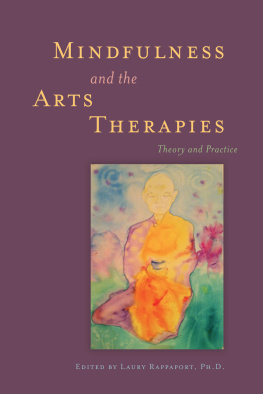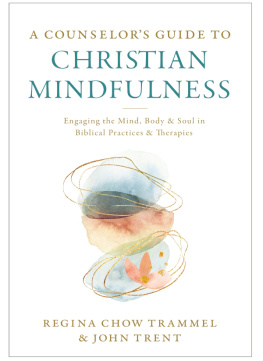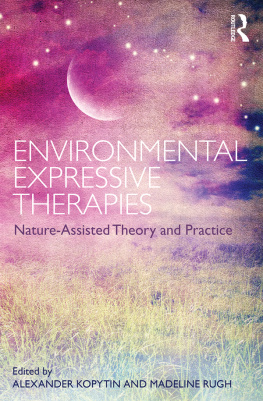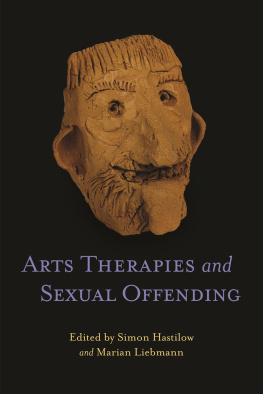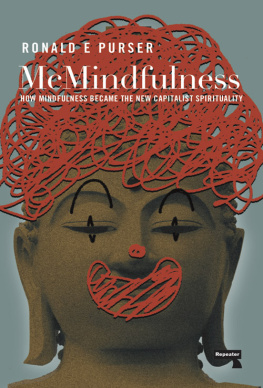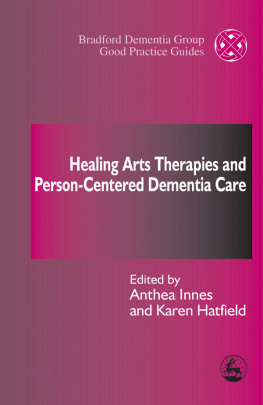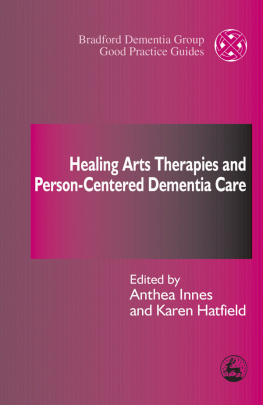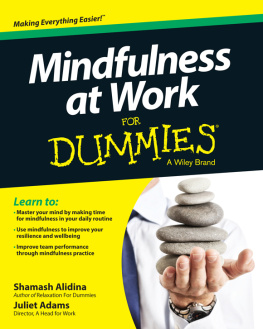true
Acknowledgments
This book is written in honor of Thich Nhat Hanh and Jakusho Kwong-roshiwho nourish the seeds of mindfulness within me and in the worldand my first meditation teacher, Gurumayi.
I am deeply grateful to Jessica Kingsley for her deep belief in this work, immense wisdom and compassion, and trust in me. This book is as rich and deep as it is because of all the authorsimmense gratitude to you for your unique contribution and heartfelt collaboration.
I honor my early teachers in the expressive artsShaun McNiff, Paolo Knill, Norma Canner, Peter Rowan, and Elizabeth McKim. To Spring Hillhome of the Opening the Heart workshopyour metaphors and teaching story live on in . Thank you to Gene Gendlinwhose Focusing process has been a teacher to me in mindful awareness, non-judgment, deep listening, and compassion; and to the Focusing community for all of your support and rich exchanges that cross with this work.
Much appreciation to those who offered their wisdom and supportCathy Malchiodi, Shaun McNiff, Terri Halperin-Eaton, Jared D. Kass, Michael A. Franklin, John Amodeo, and Madelaine Fahrenwald. Thanks to Richard Carolan for the early conceptualization and collaboration on the book. Immense appreciation to my research assistants Emily Tara Weiner, Melanie Dorson, and Chessey Bird Henry. Thank you to Ron Zaidman and Joanna Zhao, colleagues at Five Branches University and the Sonoma Mountain Zen Center.
Most of all, boundless gratitude to my husband Waynewhose day-to-day availability for consultations and support permeate the pages of this book, and whose compassion nourishes my soul; my daughter Zo e a true supporter and mindfulness bell of what truly matters in life; and to my loving family, and dear friends.
Appendix 1
Resources
Basic Mindfulness Exercises
Insight Meditation
This has been adapted by Joel Gluck from Theravada Buddhist teachings.
For the full-length version of this four-step process, please visit: www.insightimprov.org/Resources.html.
1. A RRIVING IN T HE M EDITATION R ELAXING N OTICING W HAT IS P RESE NT
In a quiet room, find a comfortable place to sit. Allow the body to relax. If you find it helps, close your eyes. Spend a couple of minutes simply arriving in the present moment.
Without changing anything, notice what is already there. Notice the body, the points of contact with the cushion or chair. Notice the energy in the body, the feeling tone or mood. How do you feel today, right now? Notice tension and relaxation. Purposely breathe into any areas of tension and let them go on the out-breath. Let go of any unnecessary holding or stiffness. Sit in a relaxed but alert way.
2. C ULTIVATING M INDFUL NESS OF A S INGLE O BJEC T ( S AMADHI ) USING THE B REATH ( A NAPANASATI )
When you are ready, notice your breathing. You may notice the belly rising and falling with each breath, or you may be aware of the sensation of breathing in and out of the nostrils. Pick one area to focus on. Do not try to change or control the breath, just notice it.
If you find yourself thinking, about anythingpast, future, judging, planning, fantasizing, etc.just notice you are thinking (you can say thinking in your mind), and then return to the breath. It is normal to thinkdo not judge yourself for thisbut simply return your awareness to the breath. This constant returning to the object of the meditation (in this case, the breath) is called mindfulness. With each in-breath, each out-breath, notice the detailshow does the body feel, what changes are there, is the breath deep, shallow, rough, smooth, fast, slow? Become fascinated with the breath.
Meditate in this way for 515 minutes, before transitioning into vipassana ( Number 3 ).
3. O PENING TO C HOICELESS A WARE NESS (V IPASSANA )
Now, instead of choosing a single object for our meditation, we are going to open to all the channels of awareness, letting the objects choose us. Throughout this meditationif you find yourself distracted or overwhelmedyou can return to your breath anytime, using it as an anchor.
In preparing for vipassana , it can be helpful to visit the six sense doors. First, open up to an awareness of your whole body. Notice any bodily sensations that are prominent. Also become aware of the overall energy and feeling-tone of the body. Next, open to your other senses one at a time: sounds, smells, tastes, and the visual sense. If you find yourself thinking about a sensation, getting lost in thought, return to the present moment and whatever the next sensation is, noticing its immediate featuresfor example, receive a sound as a sound (pitch, volume, timbre, etc.). Finally, take a minute to open to the sixth sense door: mind objects. Notice thoughts, voices in the head, images in the mind.
Now let yourself open to vipassana : rather than consciously choosing what to pay attention to, notice whatever is arising in the field of awareness. This may be a sound, a smell, a pain, an itch, a thought, an emotion, etc. Notice this object arising; notice how it changes, if at all; and notice how it passes away.
If it helps, feel free to label the channel of awareness in which the object is arising: sound, body sensation, smell, mind object, etc. This can help you maintain moment-to-moment awareness and not get lost in thought.
As vipassana deepens as a practice, you may notice more and more not only the objects arising in the field of awareness, but the nature of the awareness itself.
Meditate in this way for as long you like: 510 minutes if you are new to meditation; longer for experienced meditators.
4. P RACTICING L OVINGKINDN ESS ( M ETTA )
The purpose of metta practice is to take the qualities of mindfulness and openness cultivated in the first parts of our meditation, and use them to develop our capacity for lovingkindness, compassion, sympathetic joy, and equanimityfor ourselves and for others.
Begin by sending metta to yourself. Open your heart to these messages, as you say them silently in your own mind (also feel free to find your own words if these do not work for you). Repeat any one of these phrases as many times as necessary to really feel it and take it in:
May I be well and happy.
May I be at ease in my body and in my mind.
May my heart be filled with lovingkindnesswith love and kindness.
May I let go and be free.
May I live in peace.
Then take a few more moments to send any other messages of metta you would like to send to yourselfthese could be messages specific to what you feel you need right now or today.
Next we send metta to another person or being. (If you have sufficient time during your sitting, this part of the metta meditation is traditionally performed in three stepssending lovingkindness to a loved one, a neutral person, and a challenging person. If you are new to metta practice, it is helpful to begin by sending metta to someone it is easy to send to.)
Imagine one person in your minds eye, and picture them receiving your lovingkindness with an open heart:
May you be well and happy.
May you be at ease in your body and in your mind.
May your heart be filled with lovingkindnesswith love and kindness.
May you let go and be free.
May you live in peace.
Take a few moments to send any additional messages of metta you would like to send to this person.
Finally, we send metta to all beingsimagining we can send our lovingkindness out into the world, to all people, animals, plantsparticularly those around the globe who are suffering from illness, poverty, hunger, injustice, or ignoranceand out into the universe wherever there is existence:
May all beings be well and happy.
May all beings be at ease in their body and in their mind.
May all beings hearts be filled with lovingkindnesswith love and kindness.
Next page
